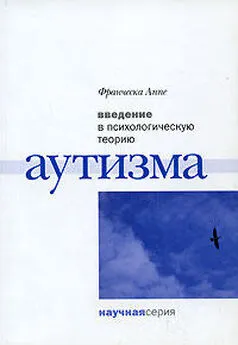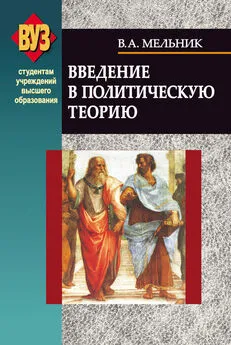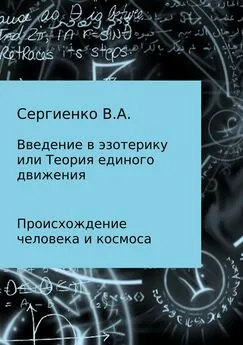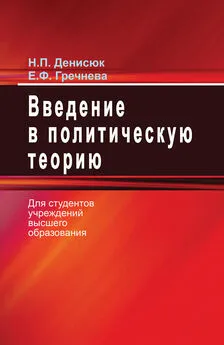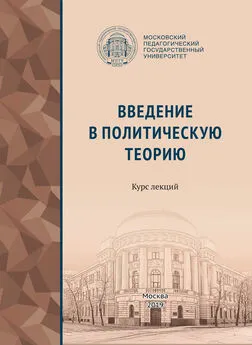Франческа Аппе - Введение в психологическую теорию аутизма
- Название:Введение в психологическую теорию аутизма
- Автор:
- Жанр:
- Издательство:Теревинф
- Год:2006
- Город:Москва
- ISBN:5-901599-52-7
- Рейтинг:
- Избранное:Добавить в избранное
-
Отзывы:
-
Ваша оценка:
Франческа Аппе - Введение в психологическую теорию аутизма краткое содержание
Книга для студентов и аспирантов, изучающих аутизм в его психологическом, медицинском, логопедическом и педагогическом аспектах, а также для всех, кто заинтересован в более глубоком понимании проблемы аутизма.
Издание осуществлено в рамках проектов
(Москва) при поддержке:
Московского представительства
(United Way International, США)
Action for Russian Children Диаконической Службы Евангелической Церкви Германии
Введение в психологическую теорию аутизма - читать онлайн бесплатно ознакомительный отрывок
Интервал:
Закладка:
Baron-Cohen, S. 1991. Do people with autism understand what causes emotion? Child Development 62, 385-95.
Baron-Cohen, S. 1992. Out of sight or out of mind? Another look at deception in autism. Journal of Child Psychology and Psychiatry 33, 1141-55.
Baron-Cohen, S. 1994. How to build a baby that can read minds: cognitive mechanisms in mindreading. Cahiers de Psychology Cognitive, 13, in press.
Baron-Cohen, S. & P. Bolton 1993. Autism: the facts. Oxford: Oxford University Press.
Baron-Cohen, S., A. M. Leslie, U. Frith 1985. Does the autistic child have a «theory of mind»? Cognition 21, 37–46.
Baron-Cohen, S., A. M. Leslie, U. Frith 1986. Mechanical, behavioural and intentional understanding of picture stories in autistic children. British Journal of Developmental Psychology 4, 113-25.
Baron-Cohen, S., J. Allen, C. Gillberg 1992. Can autism be detected at 18 months? The needle, the haystack, and the CHAT. British Journal of Psychiatry 161, 839-43.
Baron-Cohen, S., A. Spitz, P. Cross 1993a. Can children with autism recognise surprise? Cognition and Emotion 7, 507-16.
Baron-Cohen, S., H. Tager-Flusberg, D.J. Cohen (eds) 1993b. Understanding other minds: perspectives from autism. Oxford: Oxford University Press.
Bartlett, F. C. 1932. Remembering: a study in experimental and social psychology. Cambridge, England: Cambridge University Press.
Bartlett, J.C. & J.Searcy 1993. Inversion and configuration of faces. Cognitive Psychology 2 5, 281–316.
Bauman, M. L. & T. L. Kemper 1985. Histo-anatomic observations of the brain in early infantile autism. Neurology 35, 866-74.
Bettelheim, B. 1956. Childhood schizophrenia as a reaction to extreme situations. Journal of Orthopsychiatry 26, 507–518.
Bettelheim, B. 1967. The empty fortress: infantile autism and the birth of the self. New York: The Free Press.
Bishop, D. V. M. 1989. Autism, Asperger's syndrome and semantic-pragmatic disorder: where are the boundaries? British Journal of Disorders of Communication 24, 107-21.
Bishop, D. V. M. 1993. Annotation: autism, executive functions and theory of mind: a neuropsychological perspective. Journal of Child Psychology and Psychiatry 34, 279-93.
Bishop, D. V. M. & C. Adams 1989. Conversational characteristics of children with semantic-pragmatic disorder. II: what features lead to ajudgement of inappropriacy? British Journal of Disorders of Communication 24, 241-63
Bleuler, E. 1908. The prognosis of dementia praecox. The group of schizophrenias. English translation in The clinical roots of the schizophrenia concept, J. Cutting & M.Sheperd (eds) (1987). Cambridge: Cambridge University Press.
Blomquist, H. К., M. Bohmna, S. O. Edvinsson, C. Gillberg, К. M. Gustavon, C. Holmgren, J. Wahlstrom 1985. Frequency of the fragile-X syndrome in infantile autism: a Swedish multicentre study. Clinical Genetics 27, 113-17.
Bolton, P. & M. Rutter 1990. Genetic influences in autism. International Review of Psychiatry 2, 67–80.
Boucher, J. 1989. The theory of mind hypothesis of autism: explanation, evidence and assessment. British Journal of Disorders ofCommunication 24, 181—98.
Bowler, D. M. 1992. «Theory of mind» in Asperger's syndrome. Journal of Child Psychology and Psychiatry 33, 877-93.
Bowman, E. P. 1988. Asperger's syndrome and autism: the case for a connection. British Journal of Psychiatry 152, 377-82.
Bretherton, I. & M. Beeghly 1982. Talking about internal states: the acquisition of an explicit theory of mind. Developmental Psychology 18, 906-21.
Brook, S. L. & D. Bowler 1992. Autism by another name? Semantic and pragmatic impairments in children. Journal of Autism and Developmental Disorders 22, 61–81.
Bryson, S. E., B. S. Clark, I. M. Smith 1988. First report of a Canadian epidemiological study of autistic syndromes. Journal of Child Psychology and Psychiatry 29, 433-45.
Burd, L. & J. Kerbeshian 1987. Asperger's syndrome. British Journal of Psychiatry 151, 417.
Burgoine, E. & L. Wing 1983. Identical triplets with Asperger's syndrome. British Journal of Psychiatry 143, 261-5.
Byrne, R. & A. Whiten (eds) 1988. Machiavellian intelligence: social expertise and the evolution of intellect in monkeys, apes, and humans. Oxford: Clarendon Press.
Campbell, M., S. Rosenbloom, R. Perry, A. E. George, 1.1. Kricheff, L.Anderson, A. M. Small, S.J.Jennings 1982. Computerised axial tomography in young autistic children. American Journal of Psychiatry 139,510-12.
Charman, T. & S. Baron-Cohen 1992. Understanding drawings and beliefs: afurther test of the metarepresentation theory of autism. Journal of Child Psychology and Psychiatry 33, 1105-12.
Ciadella, P. & N. Mamelle 1989. An epidemiological study of infantile autism in a French department (Rhone): a research note. Journal of Child Psychology and Psychiatry 30, 165-75.
Clarke, A. M. & A. D. B. Clarke 1976. Formerly isolated children. In Early experience: myth and evidence, A. M. Clarke & A. D. B. Clarke (eds), 27–34. London: Open Books.
Clarke, P. & M. Rutter 1981. Autistic children's responses to structure and interpersonal demand s. Journal of Autism and Developmental Disorders 11, 201-17.
Cohen, D., A. Donnellan, R. Paul (eds) 1987. Handbook of autism and pervasive developmental disorders. Chichester: John Wiley.
Coleman, M. & C. Gillberg 1985. The biology of the autistic syndromes. New York: Praeger.
Cosmides, L. 1989. The logic of social exchange: has natural selection shaped how humans reason? Studies with the Wason selection task. Cognition 31, 187–276.
Courchesne, E., J. R. Hesselink, T. L.Jernigan, R. Yeung-Courches-ne 1987. Abnormal neuroanatomy in a nonretarded person with autism: unusual findings with magnetic resonance imaging. Archives of Neurology 44, 335-41.
Courchesne, E., R. Yeung-Courchesne, G. A. Press, J. R. Hesselink, T. L.Jernigan 1988. Hypoplasia of cerebellar vermal lobules VI and VII in autism. New EnglandJournal of Medicine 318, 1349-54.
Creasey, H., J. M. Rumsey, M.Schwartz, R. Duara, J. L. Rapoport, S. I. Rapoport 1986. Brain morphometry in autistic men as measured by volumetric computed tomog-raphy. Archives of Neurology 43, 669-72.
Curcio, F. 1978. Sensorimotor functioning and communication in mute autistic children. Journal of Autism and Childhood Schizophre-niaS, 281-91.
Curtiss, S. 1977. Genie: a psychological study of a modern-day «wildchild». New York: Academic Press.
Damasio, A. R. & R.G. Maurer 1978. A neurological model for childhood autism. Archives of Neurology 35, 777-86.
Dawson, G. (ed.) 1989. Autism: nature, diagnosis and treatment. New York: Guildford Press.
Dawson, G. 1991. Apsychobiological perspective on the early socio-emotional development of children with autism. In Rochester symposium on developmentalpsychopathology, vol.3, D. Cicchetti & S. L. Toth (eds), 207–234. New York: Rochester Press.
Dawson, G. & A. Lewy 1989. Arousal, attention, and the socioemotion-al impairments of individuals with autism. In Autism: nature, diagnosis and treatment, G. Dawson (ed.), 49–74. New York: Guildford Press.
Dawson, G. & F. G. McKissick 1984. Self-recognition in autistic children. Journal of Autism and Developmental Disorders 14, 383-94.
DeGelder, B. 1987. On not having a theory of mind. Cognition 27, 285-90.
DeLeon, M.J., R.J.Muoz, S.E.Pico 1986. Is there aright hemisphere dysfunction in Asperger's syndrome? British Journal of Psychiatry 148, 745-6.
DeLong, G. R. & J. T. Dwyer 1988. Correlation of family history with specific autistic subgroups: Asperger's syndrome and bipolar affective disease. Journal of Autism and Developmental Disorders 18, 593–600.
Denckla, M. B. 1983. The neuropsychology of socio-emotional learning disabilities. Archives of Neurology 40, 461-2.
Dennett, D. C. 1978. Beliefs about beliefs. Behavioral andBrain Sciences 4, 568-70.
Duncan, J. 1986. Disorganization of behaviour after frontal lobe damage. Cognitive Neuropsychology 33, 271-90.
Ehlers, S. & C. Gillberg 1993. The epidemiology of Asperger syndrome. A total population study. Journal of Child Psychology and Psychiatry 34, 1327-50.
Eisenberg, L. 1957. The fathers of autistic children. American Journal of Orthopsychiatry 27, 715-24.
Eisenmajer, R. & M. Prior 1991. Cognitive linguistic correlates of «theory of mind» ability in autistic children. British Journal of Developmental Psychology 9, 351-64.
Fein, G. G. 1981. Pretend play: an integrative review. Cognitive Development 52, 1095—118.
Field, Т. M., R. Woodson, R. Greenberg, D. Cohen 1982. Discrimination and imitation of facial expressions by neonates. Science 218, 179-81.
Fodor, J. A. 1983. Modularity of mind. Cambridge, Mass.: MIT Press.
Folstein, S. & M. Rutter 1977. Infantile autism: a genetic study of 21 twin pairs. Journal of Child Psychology and Psychiatry 18, 297–321.
Freeman, N. H., C. Lewis, M.J. Doherty 1991. Preschoolers' grasp of the desire for knowledge in false belief prediction: practical intelligence and verbal report. British Journal ofDevelopmental Psychology 9, 139-57-
Frith, C. D. 1992. The cognitive neuropsychology of schizophrenia. New Jersey: Lawrence Erlbaum.
Frith, C. D. & U. Frith 1991. Elective affinities in schizophrenia and childhood autism. In Social psychiatry: theory, methodology andpra-ctice, P. E. Bebbington (ed.), 65-8. New Brunswick, NJ: Transaction.
Frith, U. 1970a. Studies in pattern detection in normal and autistic children: I. Immediate recall of auditory sequences. Journal of Abnormal Psychology 76, 413-20.
Frith, U. 1970b. Studies in pattern detection in normal and autistic children: II. Reproduction and production of color sequences. Journal of Experimental Child Psychology 10, 120-35.
Frith, U. 1972. Cognitive mechanisms in autism: Experiments with color and tone sequence production. Journal of Autism and Childhood Schizophrenia2, 160-73.
Frith, U. 1989a. Autism: explaining the enigma. Oxford: Basil Blackwell.
Frith, U. 1989b.Anew lookat language and communication in autism. British Journal of Disorders of Communication 24, 123-50.
Frith, U. 1991a. Autism and Asperger syndrome. Cambridge: Cambridge University Press.
Frith, U. 1991b. Translation and annotation of «autistic psycho-pathy» in childhood, by H. Asperger. See Frith (1991a), 37–92.
Frith, U. 1992. Cognitive development and cognitive deficit. The Psychologists, 13–19.
Frith, U. & B. Hermelin 1969. The role of visual and motor cues for normal, subnormal and autistic children. Journal of Child Psychology and Psychiatry 10, 153-63.
Frith, U. & M. Snowling 1983. Reading for meaning and reading for sound in autistic and dyslexic children. Journal of Developmental Psychology 1, 329-42.
Frith, U., J. Morton, A. M. Leslie 1991. The cognitive basis of a biological disorder: autism. Trends in Neuro science 14, 433-8.
Frith, U., F. Happe, F. Siddons 1994. Autism and theory of mind in everyday life. Social Development, 3, 108–124.
Ghaziuddin, M., L. Y. Tsai, N. Ghaziuddin 1992a. Brief report: a comparison of the diagnostic criteria for Asperger syndrome. Journal of Autism and Developmental Disorders 22, 643—9.
Читать дальшеИнтервал:
Закладка:
